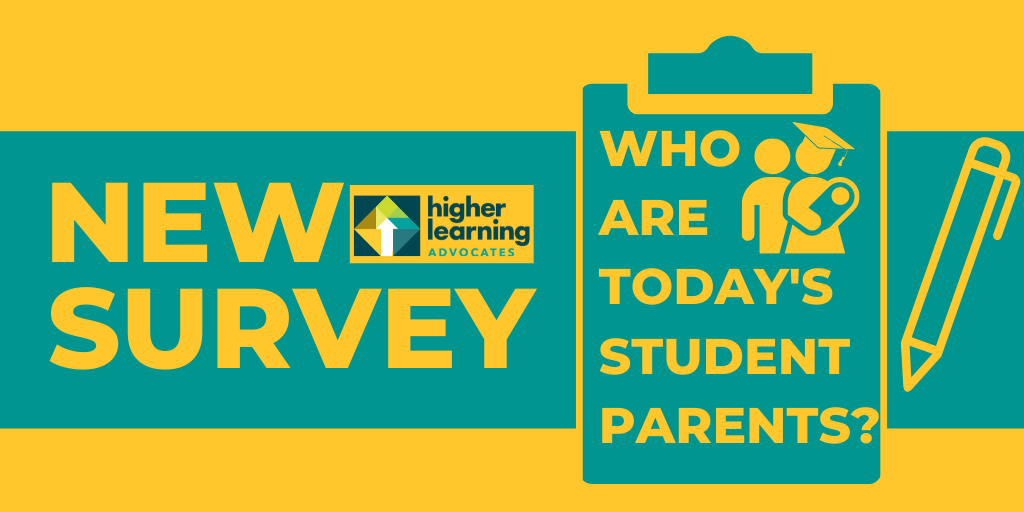101s & Backgrounders
Fact Sheet on Student Caregivers
Research on student parents and their unique challenges commissioned by Higher Learning Advocates. Nearly a quarter of today’s students are parents, and they have unique time constraints because they must balance caregiving, school work, and employment. Student parents are more likely to be older, more likely to have a low-income, and more likely to work…
101: Part-time Students
Today’s students are more diverse than previous generations. Twenty-four percent are parents, 37 percent are older than 25, 49 percent are financially independent, and 42 percent are students of color. About 40 percent of today’s students attend part-time. For more background information on part-time students download 101: Part-Time Students. This 101 details who part-time students…
Stackable Credentials Backgrounder
Author: India Heckstall Today’s students are more diverse than previous generations—they are more likely to be workers, parents, and returning adults—and do not always follow a single and consistent path to employment. As our current workforce requires lifelong learning and re-skilling, individuals now require multiple entry and exit points through postsecondary education and the workforce,…
101: Federal Accountability in Higher Education
The 101: Federal Accountability in Higher Education explains significant accountability measurement requirements that institutions of higher education must meet to gain access to federal student aid programs. Today’s students deserve to attend institutions that offer high-quality programs and credentials that lead to fulfilling careers and earnings. Download our 101: Federal Accountability in Higher Education to…
101: Today’s Students
Who are Today’s Students? Today’s students are more diverse than any previous generation of college students: they’re diverse in age, race, and income level. They’re more mobile and may not live on campus. Most participate in the workforce, either full-time or part-time. Work and family responsibilities beyond the classroom—whether that is on-campus or online—often compete…
101: Public Awareness: Racial Disparities in Higher Education
Public Awareness A national survey conducted by Higher Learning Advocates suggests that the public lacks awareness of achievement gaps in postsecondary education. When asked whether Hispanic and Black college students attending four-year public institutions were less likely to complete their degree than their white peers, a majority (51%) of survey respondents answered “no.” The truth…
Backgrounder: Evolving Models of Postsecondary Learning
Author: India Heckstall Today’s students—who are more likely to be workers, parents, returning adults, veterans, and more—may have postsecondary education experiences and pathways that don’t fit traditional molds. They no longer follow a single and consistent pathway to a degree. Today’s students need access to more flexible higher learning pathways and delivery models, as well…
101: Career and Technical Education
What is Career Technical Education? Career Technical Education (CTE) prepares learners for college and careers by providing academic and technical skills needed to succeed in the workforce at the secondary and postsecondary levels. CTE aligns education and the workforce to ensure that today’s students are learning the skills needed in the competitive job market. Nearly…

